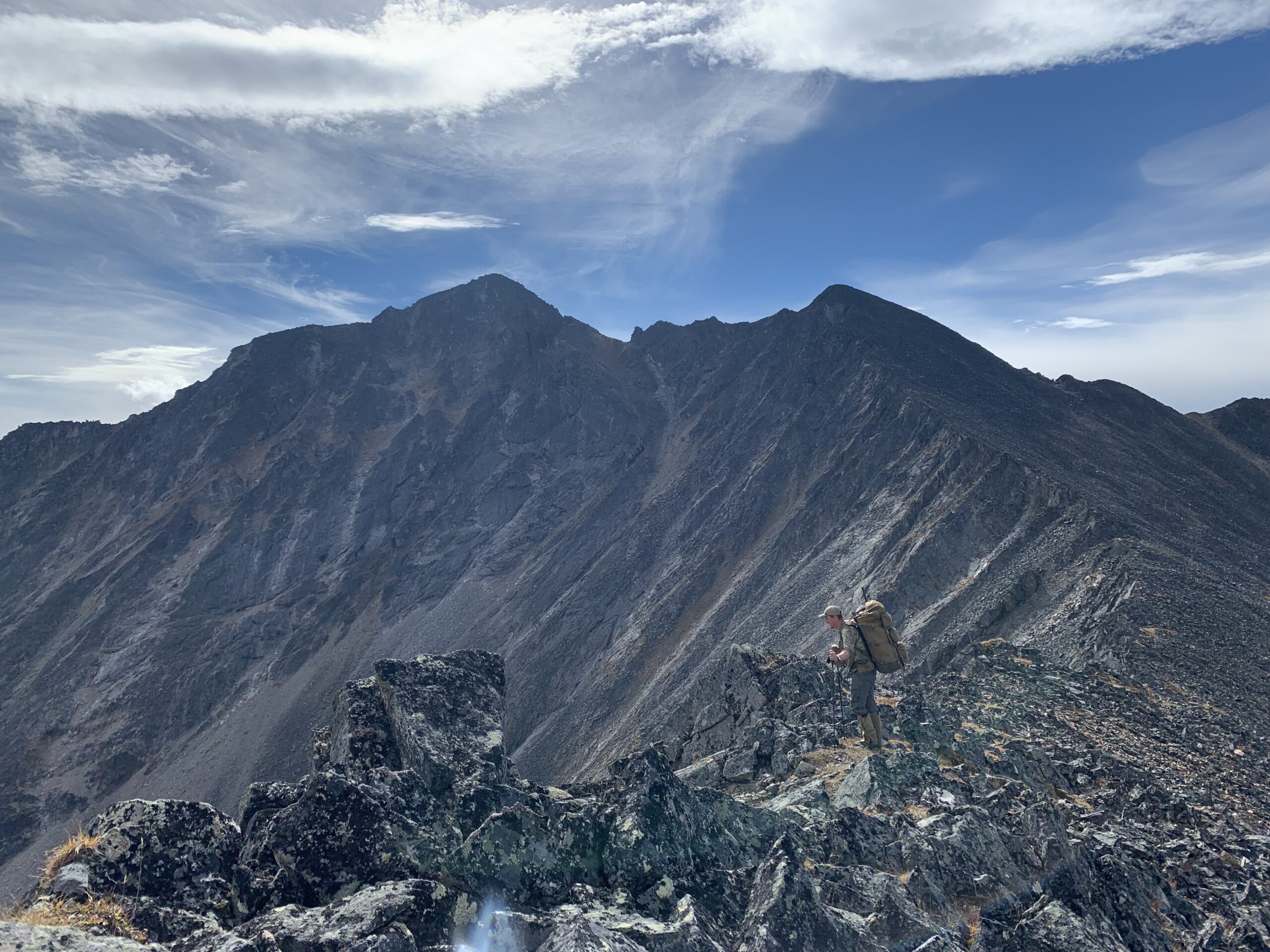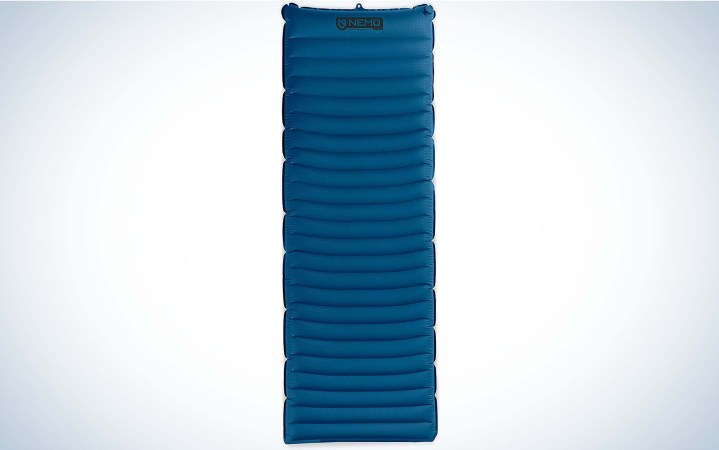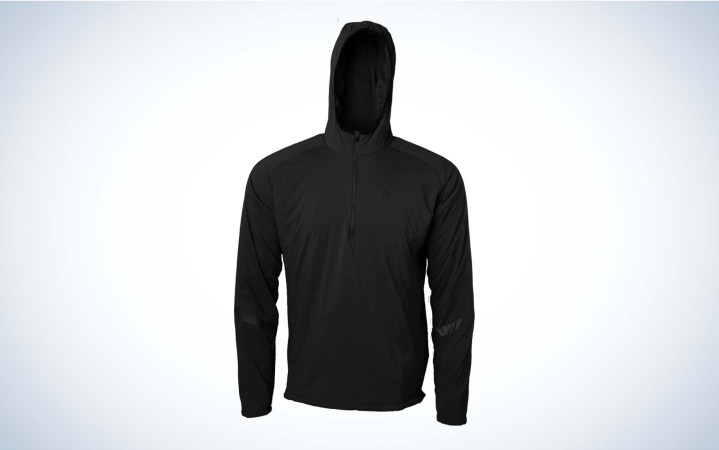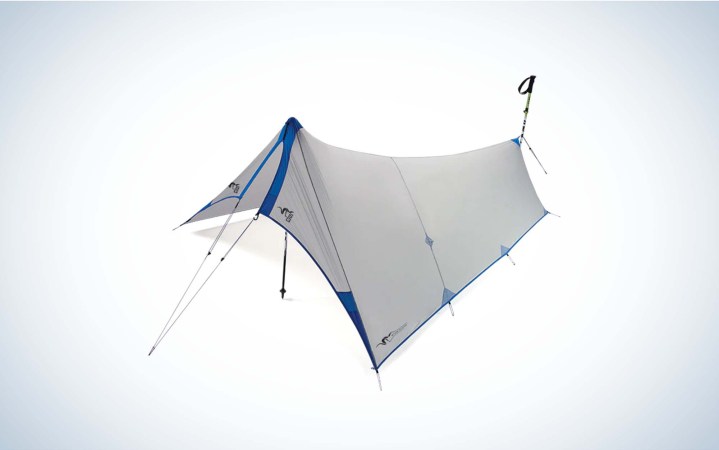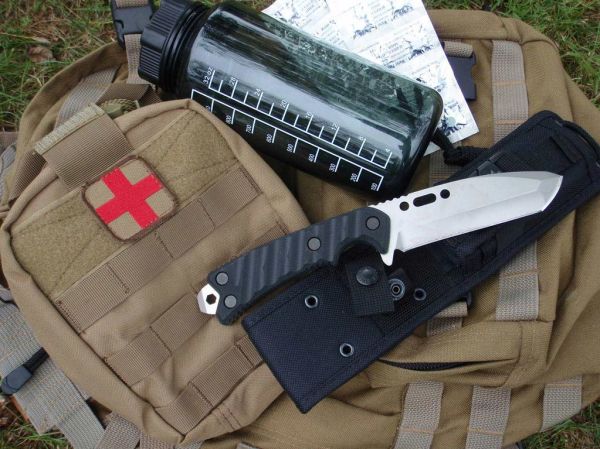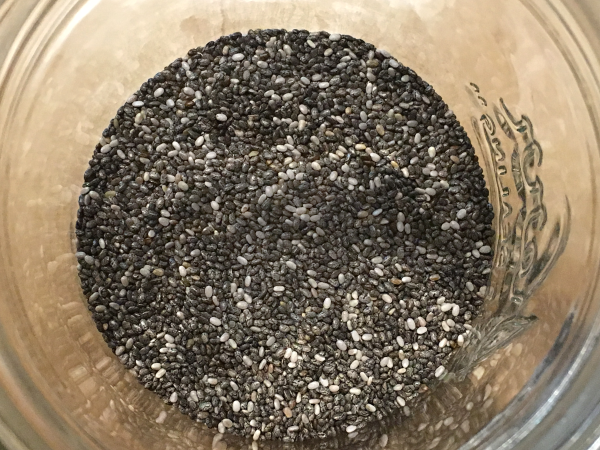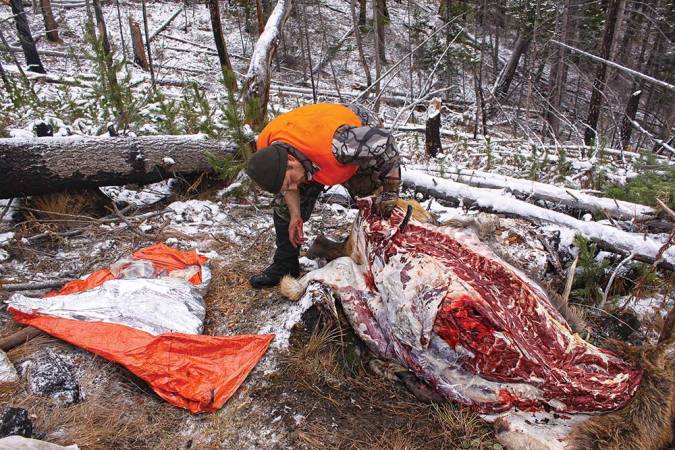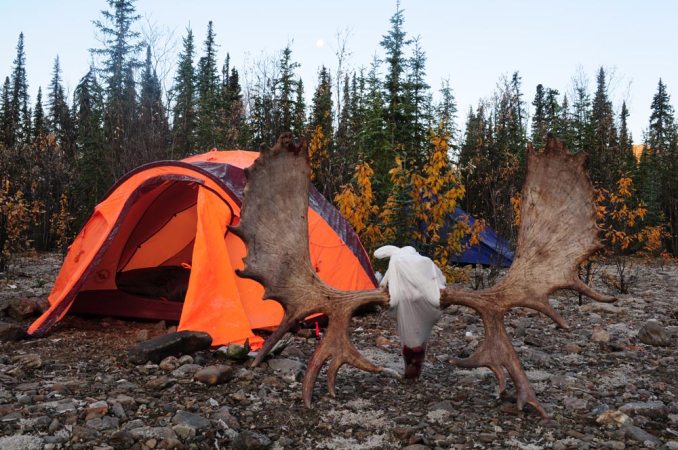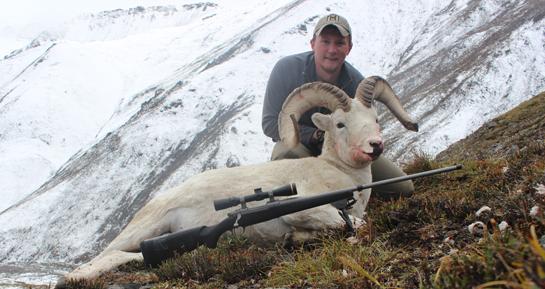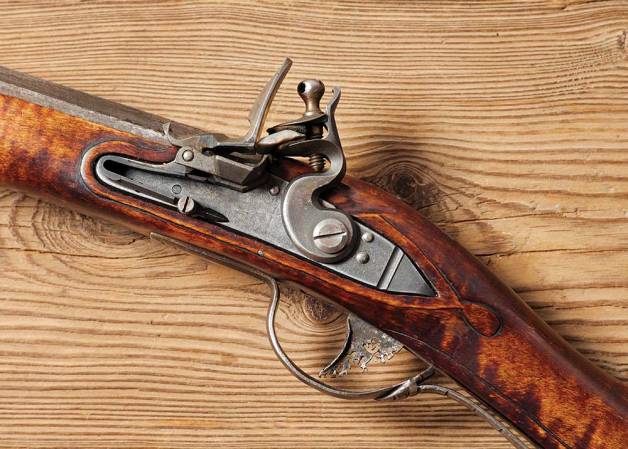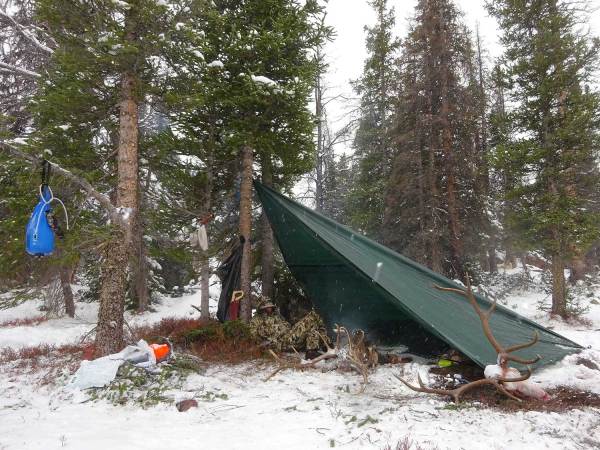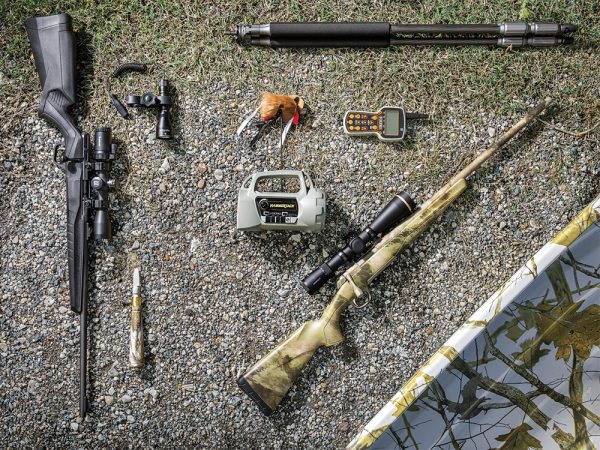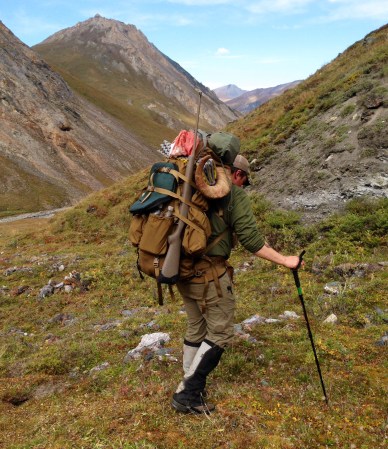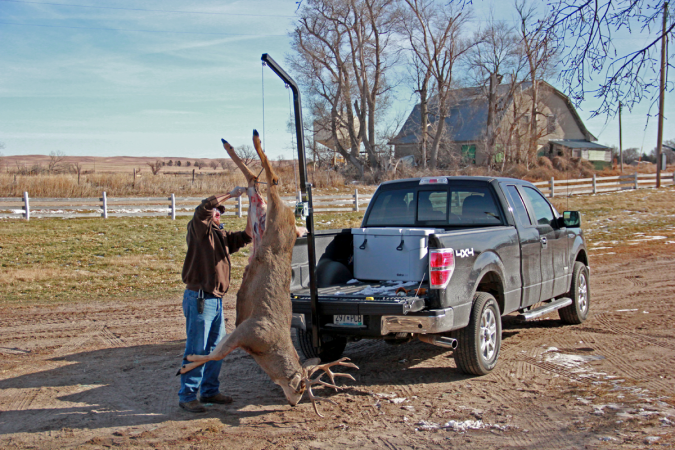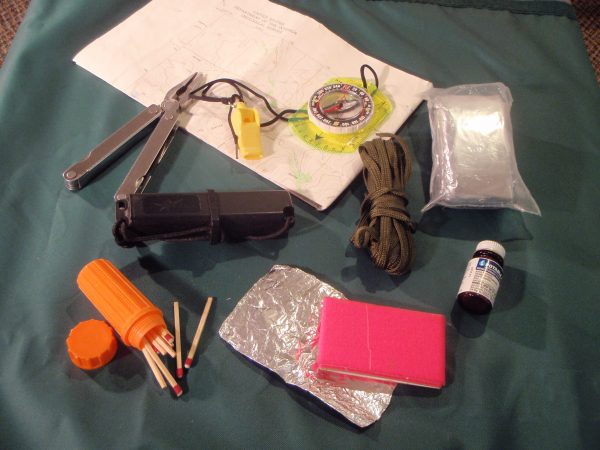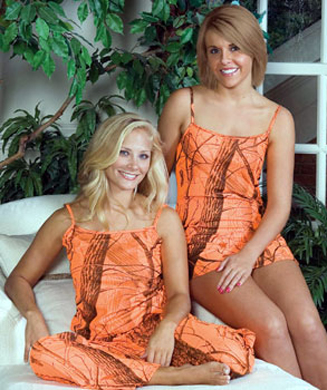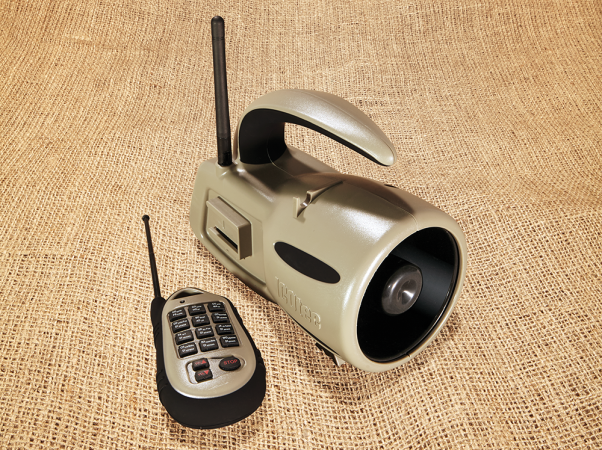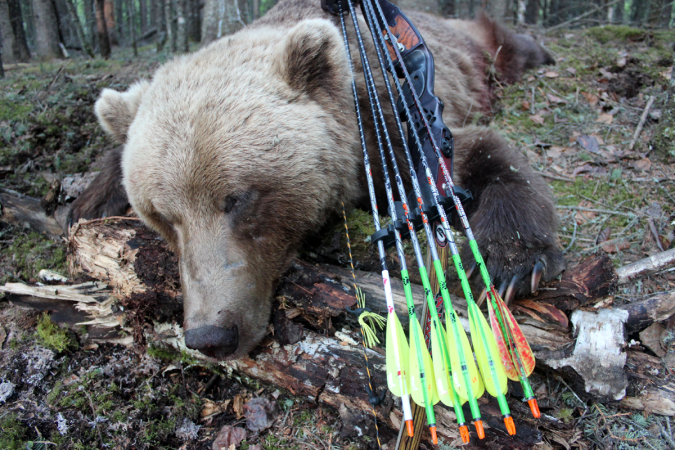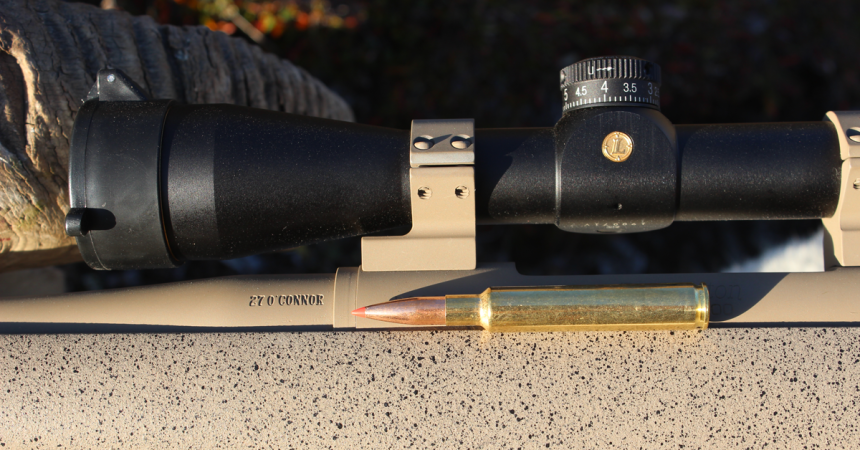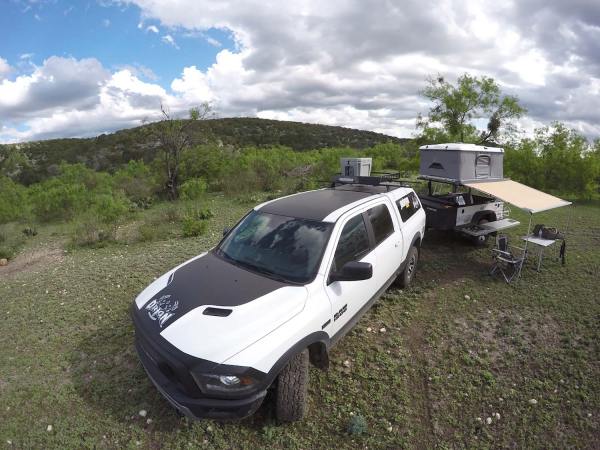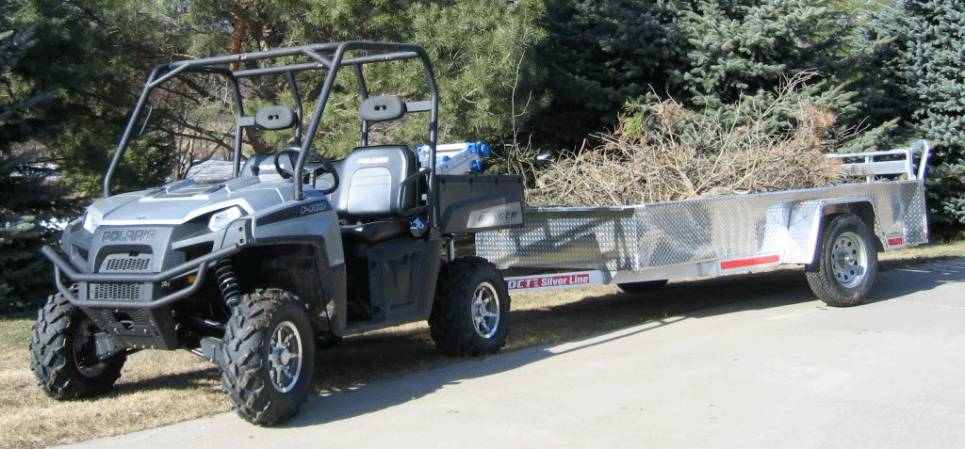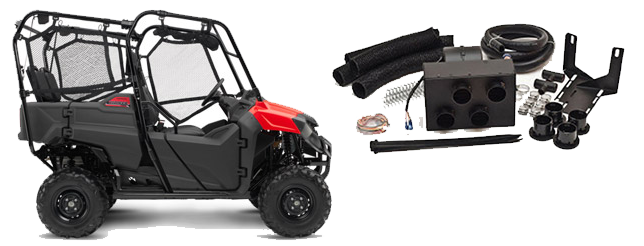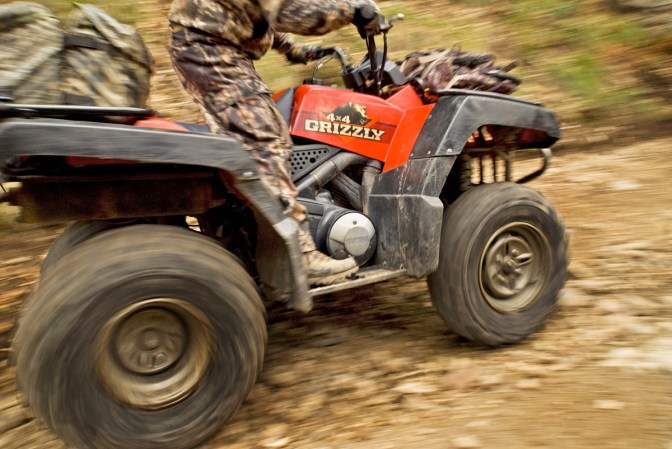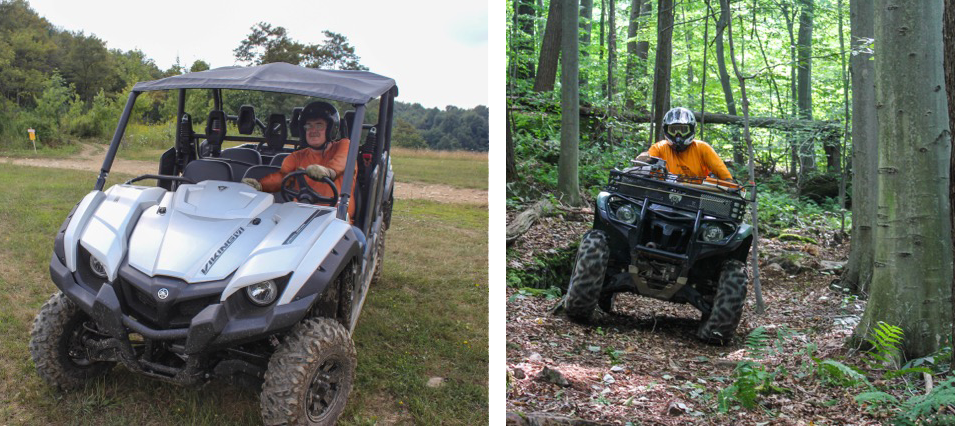We may earn revenue from the products available on this page and participate in affiliate programs. Learn More ›
Testing gear is tough. Testing mountain hunting gear is even tougher. Fit and function of clothing and gear can be evaluated at home, but long-term usefulness and durability can only be determined with time in the field.
The rigors of a DIY backpack sheep hunt in the mountains of Alaska are perfect for putting gear to the test, but the consequences can be steep if unproven gear fails. For this reason, many salty sheep hunters stick with what they know works and are reluctant to try anything new. If your pack frame breaks, you might not have any way to fix it. If your rain gear fails, you might die of hypothermia. If your spotting scope gets swamped, your hunt is over.
Sheep hunters put a tremendous amount of planning, expense, and stake in the period that they’re in the field—and gear failures simply aren’t an option. I recently returned from a 14-day sheep hunt, and when you’re going cross-country, living entirely out of your backpack for that long, every piece of gear must do its job.
Although I’ll admit that I’m certainly set in my ways when it comes to sheep and mountain hunting gear, I always try to bring a few new gear items to try out. If they pass muster at home, I’ll nervously stow it in my pack and hope for the best. During this year’s hunt, a few new pieces of gear really stood out and earned a permanent spot on my packing list. I think these items could be useful to mountain hunters everywhere.
Nemo Quasar 3D Insulated Sleeping Pad
A sleeping pad is one of the most underrated pieces of mountain hunting gear. A great pad allows you to sleep better, warmer, and more comfortably. I slept on simple foam ground pads for years but couldn’t imagine going back to that. I’ve used the same Thermarest Neo Air pad for seven years, but I feel that eventually it will fail.
The risk of using any air mattress in the backcountry is a puncture or failure. They provide much more comfortable sleep than the old bedrolls or folding ground pads, but if they fail, you’ll really be in for discomfort.
I tried several sleeping pads over the summer and found some of the more contemporary replacements to my “old reliable” to be crinkly, noisy, and I even tore a hole in one by rolling over on my elbow on the front lawn—hardly mountain material. For this year’s hunt, I considered two pads and chose the Nemo over the Big Agnes Q Core Deluxe (also a good pad).
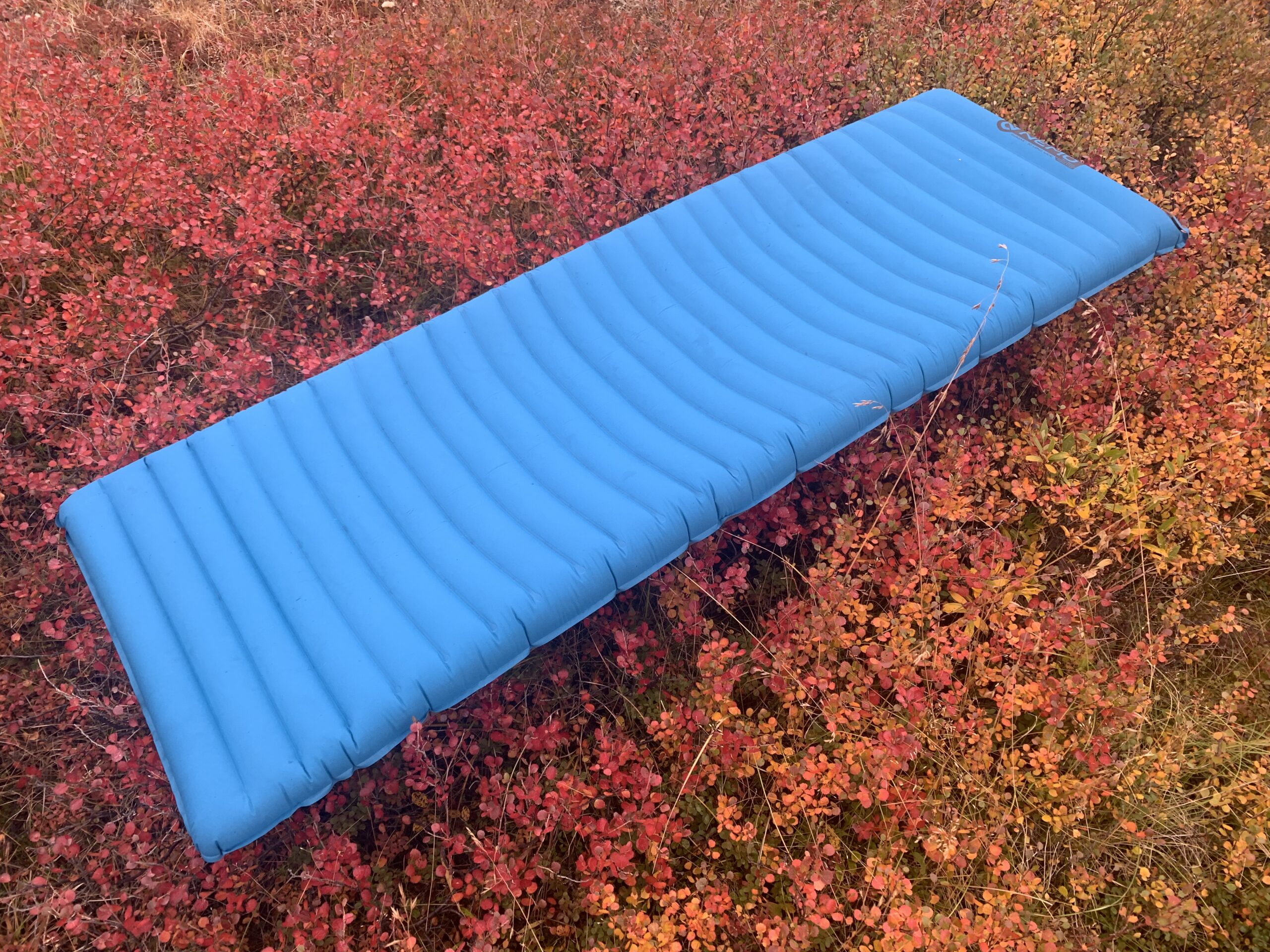
The Quasar 3D Insulated pad is quiet and made of durable 30D polyester ripstop that’s 100% recycled. The long/wide version that I carried weighs 2 pounds, 4 ounces with the stuff sack and inflation sack. That’s a relatively heavy mattress, but about the same as my old Thermarest and the Big Agnes pads. I’m 6’2” and about 230 pounds, so I need some real estate to lie down on.
The Quasar 3D has baffles designed to cradle your body and keep you on the pad—as well as an elevated headrest. It features a simple inflation valve that pairs with an inflation sack. I’ve come close to tipping over many times after blowing up my air mattress at the end of a long day, so this was a welcome feature. You simply attach the sack to the inflation valve, open it, then squeeze the air into the mattress.
The Quasar 3D inflates to nearly four inches thick and keeps me completely off the ground. The durability can’t be overstated either. Sheep hunting often has you camping in less-than ideal places—often on sharp rocks. I had to repair half a dozen holes in the bottom of my tent when I got home, but my sleeping pad was intact.
Outdoor Vitals Ventus Hoodie
Although they’re boring, it’s usually the more innocuous pieces of mountain hunting gear and clothing that have the most tangible impact on an extended mountain hunt. Ultralight mountain rifles are great, but they play a very small role in the whole hunt. It’s often the clothing that keeps you comfortable enough to thrive and hunt hard.
I’ve pieced together the clothing that works well for me, but there’s always room for improvement. This year, I packed the Outdoor Vitals Ventus hoodie to replace what I normally bring as a medium insulating layer—a lightweight synthetic fabric hoodie or softshell jacket.
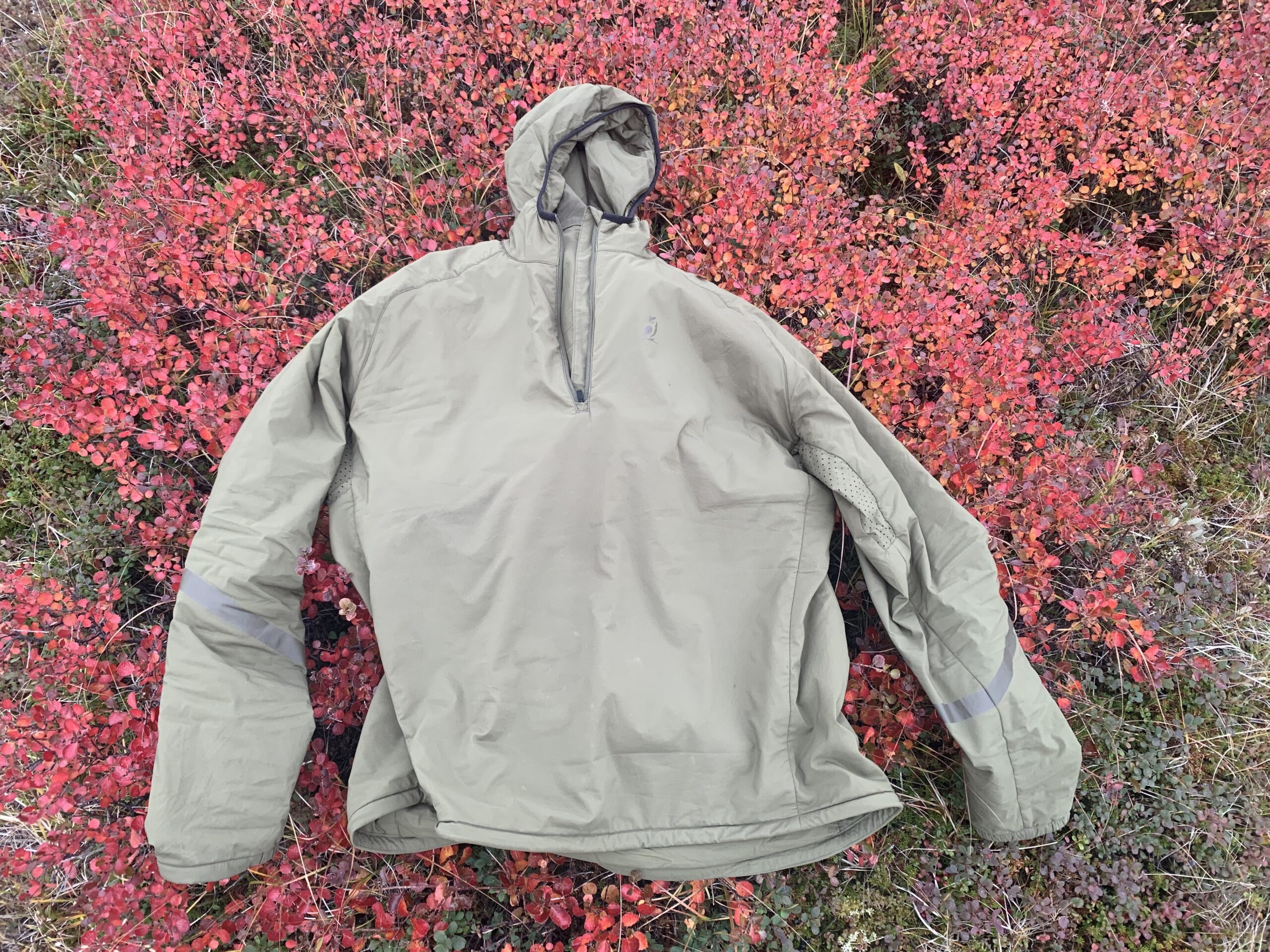
The Ventus hoodie has a snug fit and is feather light. I’ll normally wear XL but needed to go with a XXL for this hoodie. Still, it weighs only 9 ounces, less than half the weight of my other go-to fabric hoodie. It’s fully synthetic and features a thin insulation layer and armpit venting. Another perk is that it compresses down to about the size of a Jetboil stove.
Despite how light it is, I found that it breaks the wind very well, wicks moisture away from base layers, and dries out very quickly. It’s too warm to wear during strenuous hiking, but at a slower pace it’s comfortable. Gear items like this are used constantly throughout a mountain hunt, and the Ventus hoodie was one of the most impressive pieces of gear that I used this year. It’s earned a permanent spot in my pack.
Stone Glacier SkyAir ULT
Shelter is another critical element of being safe and relatively comfortable on a sheep hunt. I haven’t bought into going full-floorless when it comes to my primary shelter, but a small tarp shelter can be a vital piece of gear to keep stowed in your pack in case of a sudden storm or getting stuck away from camp for a night.
There’s a wide variety of quality shelters out there, and I’ve spent a number of nights under a Kifaru Paratarp and Supertarp. A good friend of mine always keeps one in his pack and it’s saved his ass a time or two.
This year, my hunting partner and I packed the Stone Glacier’s SkyAir ULT with the vestibule attachment. We only had to set it up a couple of times during the trip, but found it to deploy quickly and have enough room to get both of us out of the rain. The whole package including stakes is weighs about a pound and packs down to softball-size.
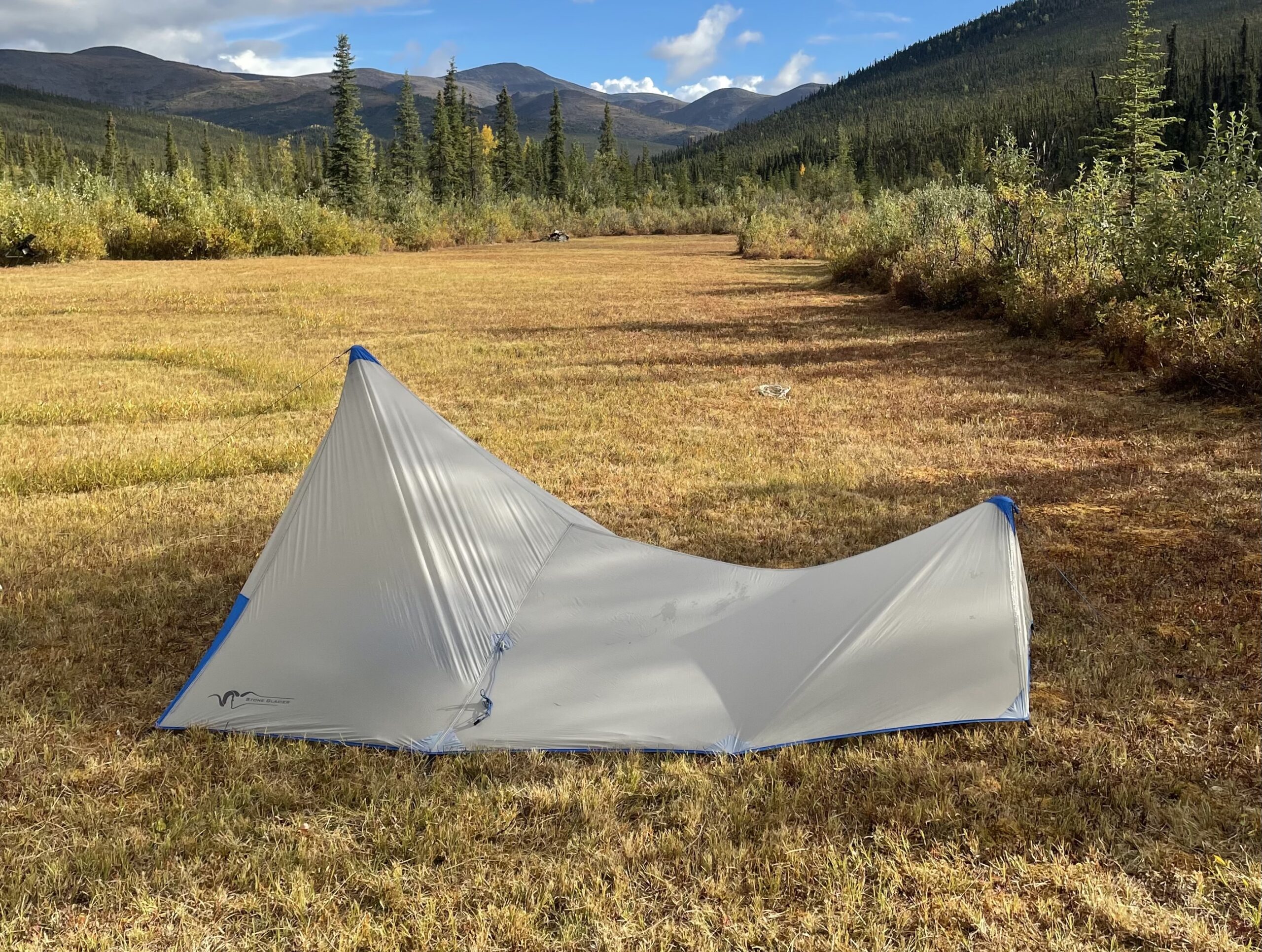
You’ll want to buy some extra stakes like the MSR Mini Groundhog because the shelter only comes with six stakes—not enough to cover each anchor point and guyline. If you’re in buggy country, you might want to get the mesh liner that the SkyAir ULT is compatible with, and they also sell a footprint ground cloth. The lightweight Nylon ripstop fabric is strong, but I would take care to avoid any rubbing on rocks—it’s very thin.
When set up properly, the shelter is capable of bucking a serious amount of wind and keeping torrential rains outside where they belong. On this trip, we also found it very useful to collect rainwater while camped in dry spots. Staking it out over a depression in the soft tundra allows rainwater to quickly pool in the center.
I would be reluctant to use this as a primary shelter on extended backcountry trips here in Alaska, but it absolutely earned a place in my backpack.

